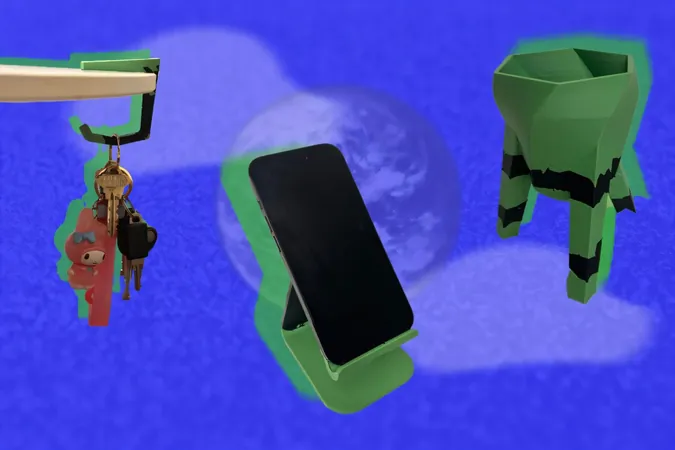
Revolutionary 3D Printing Method Boosts Strength of Eco-Friendly Parts While Reducing Plastic Use
2025-09-05
Author: Li
A Breakthrough in 3D Printing Technology
Since its inception in 1983 by Chuck Hull, 3D printing has experienced a spectacular transformation. From rudimentary creations, it now powers a diverse range of applications—custom prosthetics, intricate food designs, architectural models, and even functioning human organs. However, as technology advances, environmental considerations take center stage.
The Plastic Predicament
Despite innovation, most 3D printing still relies heavily on petroleum-based plastics. While alternatives exist in biodegradable and recycled materials, they often compromise on strength and durability. This fragility makes these eco-friendly options less suitable for structural applications, where strength is crucial.
Introducing SustainaPrint: The Game-Changer
To overcome this challenge, researchers from MIT's Computer Science and Artificial Intelligence Laboratory (CSAIL) and the Hasso Plattner Institute have unveiled SustainaPrint. This innovative software and hardware toolkit allows users to strategically blend robust and weaker filaments to achieve both sustainability and strength.
Using finite element analysis, SustainaPrint pinpoints stress-prone areas in a 3D model and reinforces those sections with high-performance materials while the rest is printed using eco-friendly filaments. This not only conserves plastic but also maintains structural integrity.
Strength Without Compromise
During testing, the team employed Polymaker's PolyTerra PLA for eco-friendliness and Ultimaker's Tough PLA for reinforcement. Remarkably, even with just 20% of the object reinforced, SustainaPrint restored up to 70% of the strength of a fully high-performance printed part.
Proving the Concept
The researchers printed various objects—from basic mechanical shapes to functional household items—and conducted rigorous mechanical tests. The results were striking: the hybrid configurations often exceeded the performance of entirely Tough PLA prints. This success underscores the potential of material mixology, allowing stress to be more evenly distributed.
The Science Behind SustainaPrint
Users begin by uploading their 3D designs into a specialized interface, marking areas subjected to forces. The software then simulates how the object will react to stress, producing a detailed pressure distribution map. This allows easy categorization of regions needing reinforcement.
DIY Strength Testing
Recognizing the need for accessible strength assessments, the team also created a DIY testing toolkit, enabling users to measure strength using easily available items.
The Future of Sustainable 3D Printing
Currently designed for dual-extrusion printers, researchers are optimistic that SustainaPrint can adapt for single-extruder setups with some manual effort. Future iterations may leverage AI for fully automated stress modeling.
Open-Source to Educate and Innovate
SustainaPrint will be released as open-source software, promoting usage and modifications by the public. The ultimate aim? To educate future innovators about material science, structural engineering, and sustainable design—all through hands-on projects.
Closing Thoughts
As sustainability increasingly impacts 3D printing, SustainaPrint stands at the forefront, integrating environmentally-friendly practices into the very design process of manufacturing. Co-author Patrick Baudisch emphasizes the project's relevance, addressing the connection between recycling theoretical ideas and practical application, making a significant leap towards genuine eco-conscious innovation.


 Brasil (PT)
Brasil (PT)
 Canada (EN)
Canada (EN)
 Chile (ES)
Chile (ES)
 Česko (CS)
Česko (CS)
 대한민국 (KO)
대한민국 (KO)
 España (ES)
España (ES)
 France (FR)
France (FR)
 Hong Kong (EN)
Hong Kong (EN)
 Italia (IT)
Italia (IT)
 日本 (JA)
日本 (JA)
 Magyarország (HU)
Magyarország (HU)
 Norge (NO)
Norge (NO)
 Polska (PL)
Polska (PL)
 Schweiz (DE)
Schweiz (DE)
 Singapore (EN)
Singapore (EN)
 Sverige (SV)
Sverige (SV)
 Suomi (FI)
Suomi (FI)
 Türkiye (TR)
Türkiye (TR)
 الإمارات العربية المتحدة (AR)
الإمارات العربية المتحدة (AR)